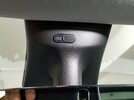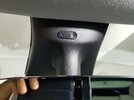AlanSubie4Life
Efficiency Obsessed Member
So it turns out the S refresh (likely not just plaid) has IR leds along with the camera DMS.
I have a few questions about this:
1) Why don't these IR LEDs show up in the prior picture? Is hiding IR illumination devices behind plastic a "thing?" (I don't know.)
2) Why are they not placed symmetrically around the camera lens?
3) Why are they visible in this picture? Is this a thing for cameras on phones; they image IR effectively in broad daylight?
You can see where I am going with this.
The camera positioning is much better than Model 3, though. It's not behind the mirror!
In any case I wouldn't be surprised if there were IR illumination added...somewhere.... Though long exposure seems like it would work basically all the time with current technology (at the expense of latency). I'm just confused about what we're looking at here.





